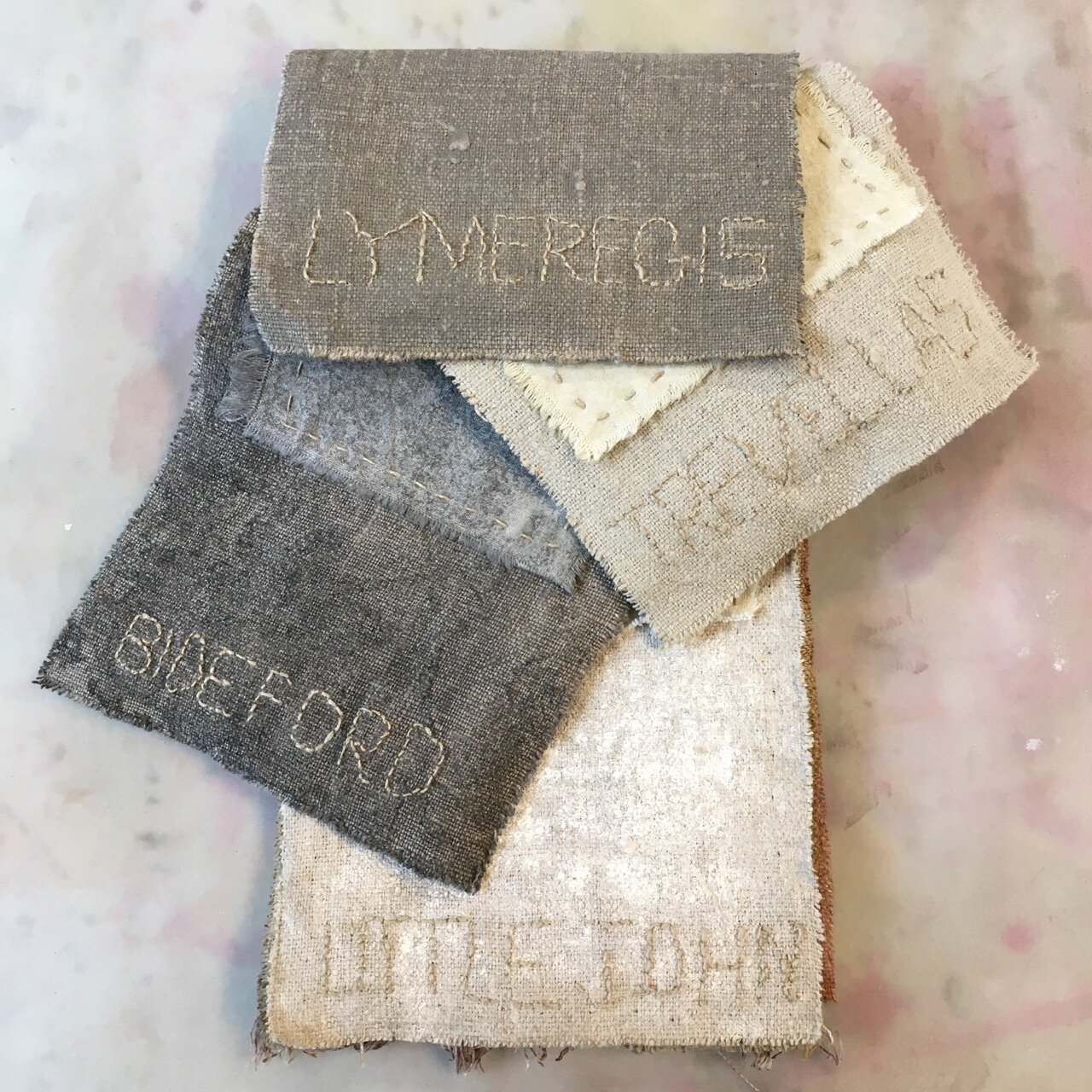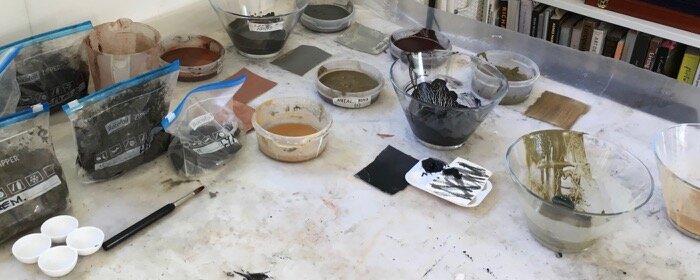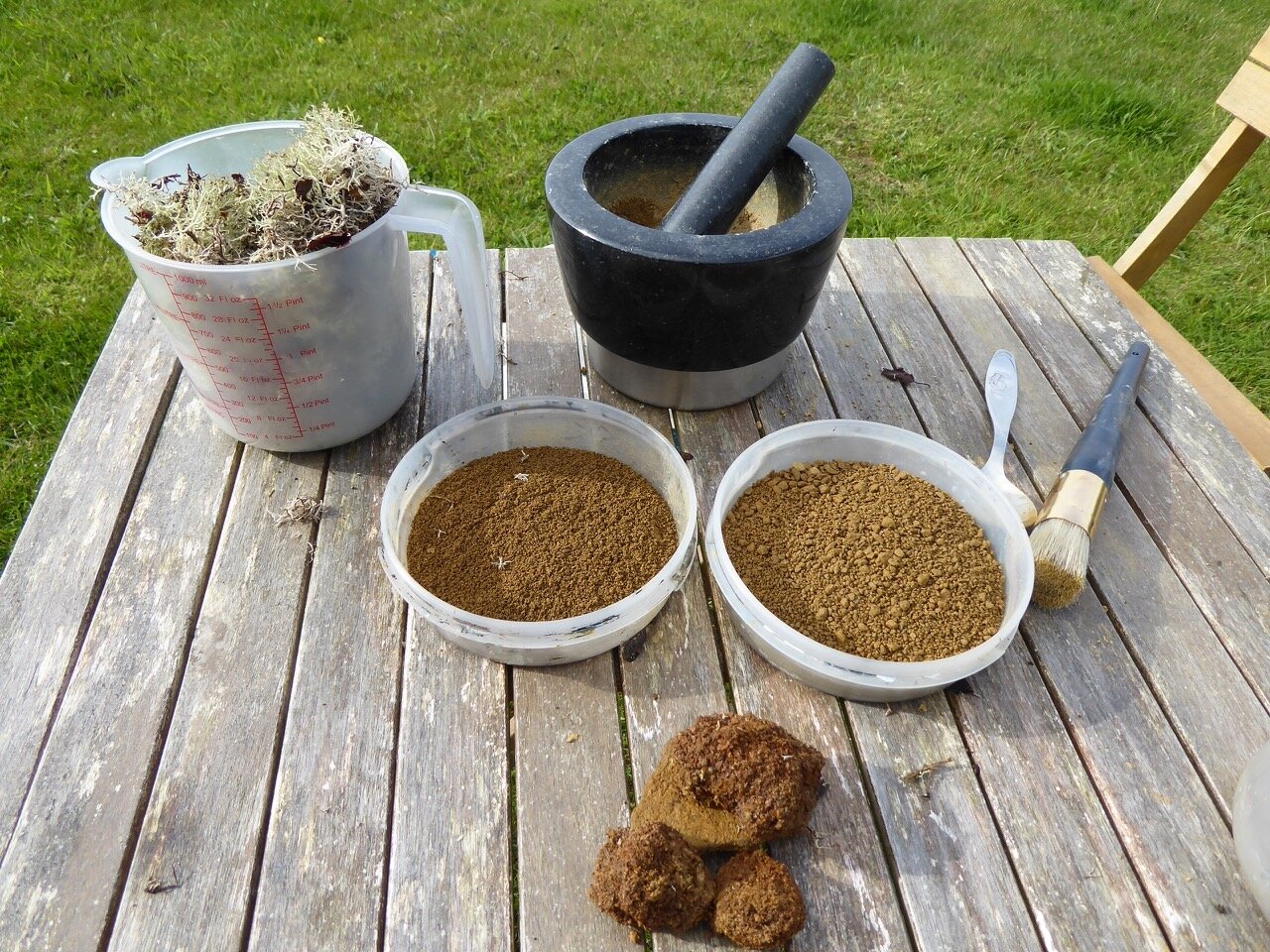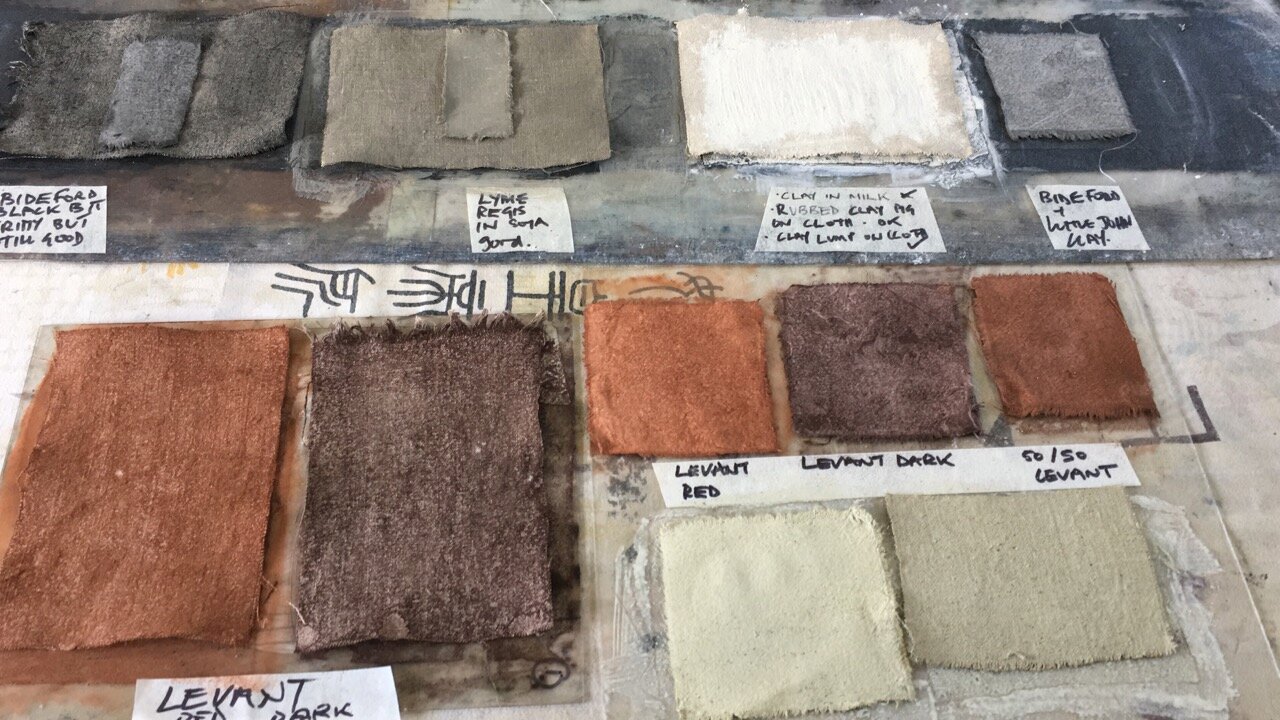field trip - pigment road trip 2021
to Cornwall to gather mineral rich iron oxide soil
wanting to know more I started studying geology, rocks, minerals, earth and how to process my own pigments, this lead to the Pigment Road trip to Cornwall to gather the mineral rich red, yellow & purple iron oxide soil, the waste material from the extensive 18th century tin and copper mining, white china clay from the worlds largest 19th Century quarries and naturally occurring green, grey and black pigments from the cliffs.
tin & copper mines define the cornish landscape
south west coastal path
I love the rugged windswept west coast of Cornwall and have walked the coastal path between Botallack and Levant/Geevor tin mines before, passing the pump houses perched precariously on the cliff edge
A retired miner told me about the local geology, how the stunning turquoise running down the black locally named ‘killas’ rock was oxidised copper and that the mine owners discarded the less valuable iron oxide earth as they dug deeper for the valuable tin and copper in seams a mile out under the seabed
bone china clay quarry
experimenting with the idea of incorporating porcelain into my textiles, the St Austell bone china quarries were my first stop, a landscape of ‘white mountains’ known as the Cornish Alps. I read that for every ton of china clay extracted six tons of mineral waste is produce
exploring the scrubland area on foot I stumbled upon the largest working quarry in the UK, a landscape of dumper truck roads rising high above the quarry floor where the clay was being extracted. It was a fascinating place but I also felt a sadness witnessing the scars on the landscape.
contaminated landscape
the Wheal Maid tin mining valley is a contaminated landscape, the orange lagoon waters containsing arsenic, mercury and nothing grows in the grey soil by the waters edge. Walking up to the pump house on higher ground between scrubby plants I found a source of good taupe and green earth pigment, but it was a haunted environment of “danger keep off signs”
trevellas cove
Shale found at Trevellas Cove on St Agnes Point grinds down to a beautiful french grey. The cliffs on this coast have been eroded by the relentless Atlantic Ocean, exposing millennia of rock strata in a subtle palette of blues, greens, greys and rusts with stunning rocks crisscrossed with lines that will definitely inspire mark making and stitching
bideford black
a natural occurring carbon based mineral formed 300 million years ago during the Carboniferous era from tree ferns when the area had a tropical climate, it runs in a seam below the coal from the coast to the town of Bideford where it was mined as a paint and used by Max Factor for mascara!
the wild pigment project
making contact with Pete Ward an artist who has been collecting West Country earth pigments for the past decade and written an informative teachers guide with OS map references.
I visited him at the stunning Porthmeor Studios overlooking the beach in St Ives, we had an interesting conversation about our work and he was generous sharing his knowledge about the safety and mineral content of the various local soil
shepherds hut - pop up studio
Arriving at my base, a cosy shepherds hut tucked in from the prevailing wind overlooking the Tin Mining West Atlantic Coast the scarred landscape made me aware to be cautious of the dangerous minerals contained in mine waste soil and to only gather small bags of earth, particularly from natural resources
Lyme Regis - Jurassic coast
I stopped at Lyme Regis on the Jurraisic coast, home of the fossil hunter to collect some of the grey clay from the cliffs that alternates with layers of limestone. The clay was very sticky and contained lumps of hardened rock but eventually it ground down to a fabulous grey. I must have been the only person looking up at the cliffs - everyone else was bent over searching for fossils
processing the pigments
During the sunshine in June I processed the collected earth, washing, grinding it with a pestle and mortar, sieving it with finer and finer mesh, drying it and repeating the process until I had clean finely powdered pigment.
processing the pigments
I then mixed the pigments with the soya milk binder and painted it on linen and calico to create a sample book of the beautiful subtle palette of my collected natural earth pigments; finally I hand stitched the place of origin on each sample and stitched the book together (top photo)
I love the slow mindful process of collecting the pigments and I am excited about working with this beautiful subtle palette of colours
Cornwall earth pigment collection 2021
cornwall paintbox cards
I really enjoyed the process of producing my own box of watercolour paints from the pigments, mixing them with gum arabic, honey and glycerine using my new ‘favourite’ acquisition - a glass muller.


























